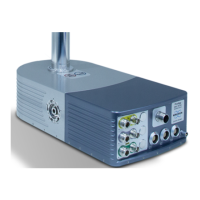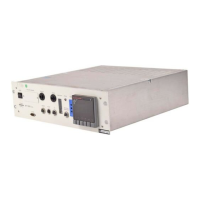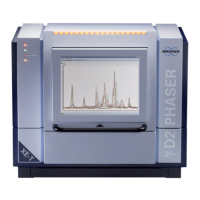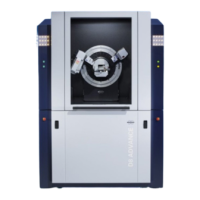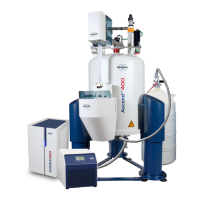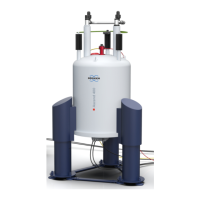78 (107) BRUKER CryoProbe User Manual
Troubleshooting
The following events will cause an emergency warm-up:
Active emergency warm-up
- Overheating due to excessive RF power. Stop the NMR experiment, press
COOL
DOWN
, and modify the experimental parameters such that the average RF pow-
er is reduced (see User Manual, "Average RF power" on page 59
for more de-
tails).
- Loss of vacuum. Check for a vacuum leak.
Passive emergency warm-up
- Loss of He pressure. Check for a He leak.
- Cooling water supply interrupted for a while (water-cooled He Compressor
only). When the cooling water is back, press
COOL DOWN. If this fails, the tem-
peratures within the system are already too high to re-initiate a
COOL DOWN. In
this case wait until
UNPLUG lights up. Such a passive emergency warm-up typi-
cally takes overnight.
- Fault in the CryoController. An internal watchdog will shutdown the unit within a
few seconds if the CryoController doesn’t respond anymore. Reboot with a
CryoCooling Unit mains O
FF/ON.
- Overheating of the CryoController when the CryoController fan fails. In this
case, an internal overheat protection shuts down the whole unit. After a while,
the CryoController can be rebooted (via CryoCooling Unit mains O
FF/ON).
CryoProbe temperature unstable 7.6.3
Extensive decoupling or trim pulses can heat up the CryoProbe and eventually
even cause an emergency warm-up. Try to reduce RF powers, durations, or use
alternative pulse sequences if possible.
When calling B
RUKER for advice, make sure to have information about the pulse
sequence, experimental parameters, and sample properties at hand.
Condensed water or ice on the CryoProbe 7.6.4
Since the CryoProbe housing is somewhat colder than room temperature in nor-
mal operation, some water may condense in environments with high air humidity.
Under these circumstances, condensed water would also be found at the mag-
net’s gas outlets. Check your air conditioning.
Condensed water may also appear if a VT gas cooler, e.g. a BCU05, is employed
with a VT hose that is too short. In this case, ice accumulates at the VT gas entry
of the CryoProbe. Switch O
FF the VT gas cooler, warm-up the CryoProbe to ambi-
ent temperature, and extend the VT hose such that there is no ice on the Cryo-
Probe end of the VT hose.
Ice on the CryoProbe housing indicates a problem with the vacuum isolation. In
this case, the CryoProbe System will be automatically warmed up by the Cryo-
Controller. Since on-site repair of a CryoProbe is impossible, it must be sent to
B
RUKER. Send also the latest logfile (see "Logfile" on page 73) via e-mail be-

